Death from nowhere. About the mine war on the sea. Part of 2
At present, it is the United States that has not only the most comprehensive concept of a mine war, but also the forces and means necessary for it, as well as trained personnel, who continuously improve their skills in mine warfare in exercises.
At first glance, US decisions are compromise, as they do aviation mines structurally similar to air bombs, which is not entirely optimal. But on the other hand, this gives them the opportunity to mass-produce both real combat mines and practical mines for exercises, and use them intensively. Also, such unification reduces the cost of the armed forces.
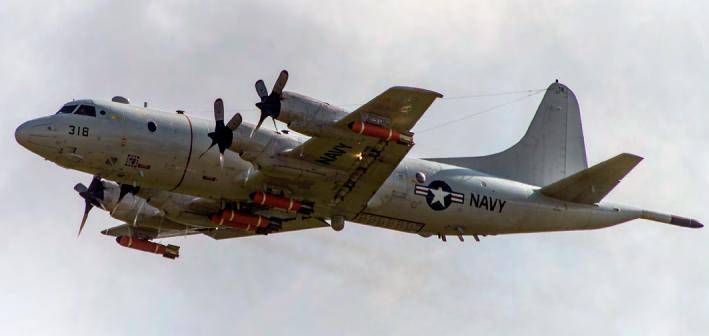
Or an example such as a mine torpedo captor. She only attacks underwater targets. At first glance - a strange decision, because the enemy submarines will be able to "slip" barriers in the surface position. In fact, the Americans killed a crowd of hares with one shot. They solved the problem of the defeat of neutral ships and ships, civilian ships, nullified the risk of politically unacceptable collateral losses, and without inventing technically complex systems for selecting targets.
Yes, they let the surface ships leave, so what? Their carrier-based aviation is quite capable of preventing any ships from walking on the surface of the water, and mines can work under the surface. This is all the more important because the fleet of their main enemy - our Navy - is mostly underwater.
Hidden mining with submarines for them is also not a problem.
Similarly, Americans look good in mine clearance. At first glance, their approaches are more similar to those that were considered advanced in the 80-s and 90-s of this century, and there are only eleven minesweepers, but not everything is so simple.
Nowadays, as mentioned earlier, the “top mine” method of dealing with mines is the combination “Mine Finder + Disposable Mine Shredder”. This approach is due to the fact that now part of the mines is tuned to specific ranges of physical fields, when detecting which the mine will work (and the physical fields created by uninhabited underwater vehicles - NLA - are usually not included in this range), and the other part is used as "defenders" and it works on literally everything.
In the eighties, to neutralize a mine, it was enough to use STIUM, a self-propelled remote-controlled mine finder, a small uninhabited underwater vehicle capable of finding a mine using sonar search and installing a small explosive charge on it, which then, after the departure of STIUM to a safe distance, undermined and destroyed mine.
Mine defenders put a cross on this practice. Now, when trying to STIUM neutralize mine defender, she was just undermined. STIUM is an expensive machine, much more expensive than a modern exterminator. This fact caused the birth of modern tactics and technology with all its minuses in the form of the duration of work on the destruction of mines and the huge price of consumable destroyers.
However, mine defenders have a weak spot - since they react to a very wide range of external disturbances, they could, in theory, be rubbed with the same acoustic trawls - if the trawls could move on their own, without minesweepers. With this approach, defenders would be in the position of the victims — they would be destroyed by a trawling, and then the “main” mines, unable to react to the approach of the STIUM, would be easily destroyed by these vehicles.
Expensive disposable destroyers would not have podnadozhilis.
And here the Americans have a trump card - thirty MN-53E anti-mine helicopters, which not only carry a special anti-mine GUS, but also tow a trawl in flight. A trawl that pulls a helicopter may well wipe defenders without putting the minesweeper at risk of inevitable death. Because it is towed by a flying helicopter, not a minesweeper.
The Americans have long had these machines in service, they used similar helicopters even while trawling Suez, basing them on universal landing ships, and while these machines paid off completely.
And when the helicopters rattled defenders, they come into action their PPA - STIUM. But, unlike other countries, they are based not only on minesweepers, and not so much on them.
At present, in the USA, with the presence of the eleven minesweepers of the Avenger class, albeit not quite modern, but fully adequate to the tasks, a program has been implemented for the deployment of expeditionary mine action units. These units, which are armed with boats with sonar equipment, search engines, STIUM, and disposable destroyers, can be based on almost any ships, as well as on the coast. And if in general, the eleven US minesweepers are not impressive in number, in general, the number of mine action units in the Navy is very large, and the presence of helicopters with trawls that quickly “drop out” dangerous mines - defenders, then gives these units the opportunity to act freely. They can be placed both on amphibious ships, and on floating expeditionary bases, and in ports where mines need to be cleared, on Coast Guard ships, or simply on warships.
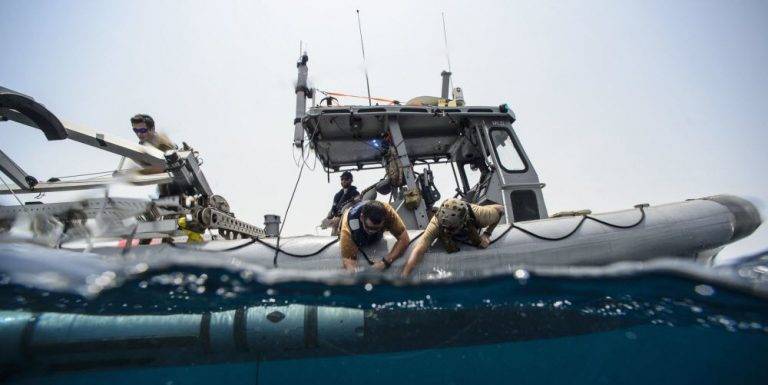
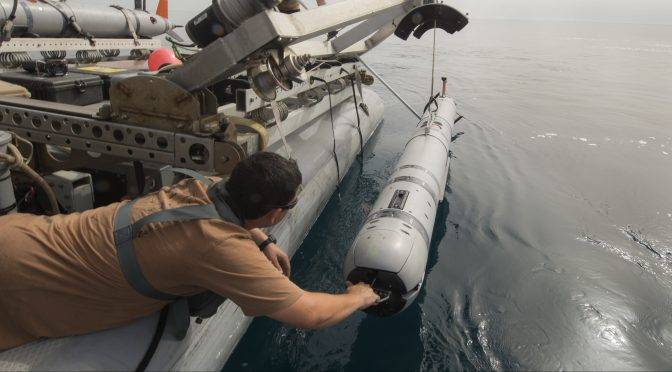
Instead of the minesweeper - the boat. And it works. In the photo - the expeditionary mine action team and the NPA Mk.18
One of the objectives of the LCS program was to fight mines. As part of the creation of a mine "module" for these ships, work was launched on the project RMMV - Remote Multi-Mission Vehicle. This submarine drone, according to the creators of Lockheed Martin, was supposed to be a key mine action tool for LCS, although it began to be designed for more destroyers of the Spruence class.
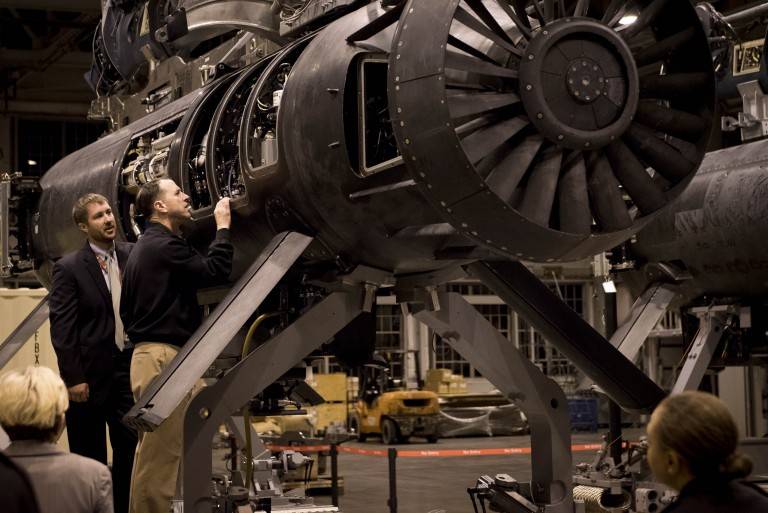
The project, however, failed, but other important subsystems “turned out” were the Airborne Laser Mine Detection System (ALMDS), that is, the airborne laser mine detection system, and the Airborne Mine Neutralization System (AMNS), which means the airborne mine neutralization system. Both are mounted on MH-60S helicopters.
Peravya of them, created by Northrop Grumman, is a laser emitter, the backlight of which allows a special optical system to detect mines at a shallow depth through the water column.
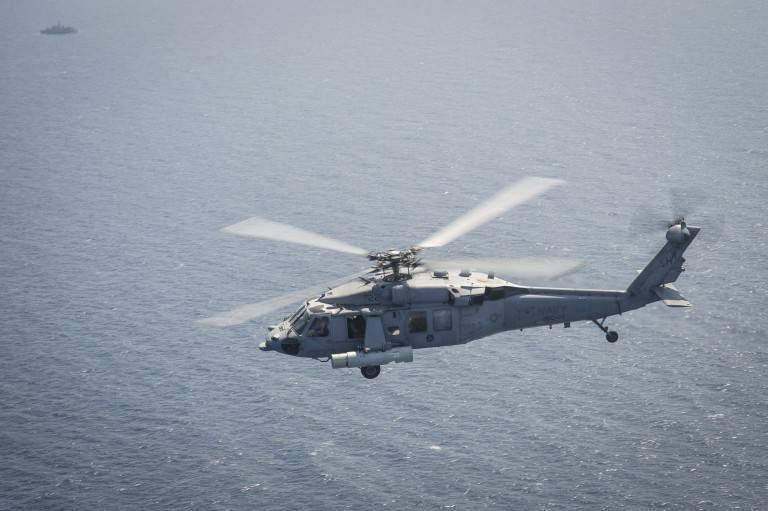
The second, from Raytheon, is a pair of disposable destroyers remotely controlled from a helicopter dropped into the water from a helicopter.
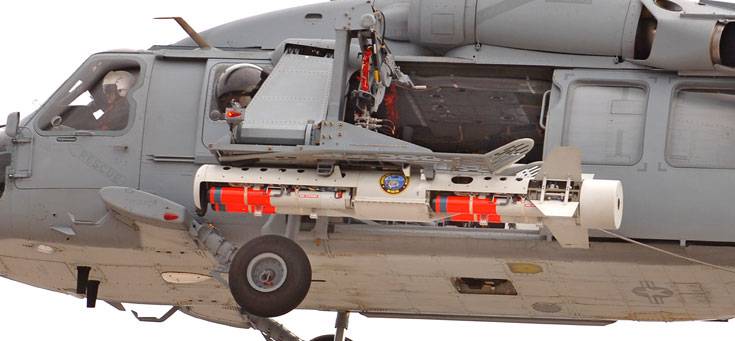
Americans already used the laser system in Bahrain, during the Shiite riots in this country, in order to exclude the production of mines of various types by the Shiites or Iranians. At shallow depths, this system is quite justified.
At the moment, the American military industrial complex is called "in work" many other projects related to mine clearance. For example, NPA “Knifefish” (Fish-knife) is a mine finder that can not only find mines, but also recognize and classify them. It is assumed that this system will replace the dolphins, which the Americans previously massively used to search for mines (and very successfully).
Teams of specially trained divers, trained to neutralize “simple” mines, such as outdated anchors with contact fuses, have not disappeared anywhere. These divers are also used during special operations. For example, in the 60s, the Americans managed to steal the newest minute torpedo during the exercises of the USSR Navy.
The final touch to the American approach is the placement of a full-fledged mine-fighting equipment compartment right on the combat corbels. So, for example, on the destroyer URO Bainbridge, equipped with a closed compartment for the NPA, a crane for its launch into the water, and all the equipment necessary for the destroyer to be able to independently fight with mines anywhere in the world. This is not a substitute for the minesweeper or a specially trained mine action team, but the destroyer is fully capable of ensuring his own passage through the mines. While the project of equipping destroyers with anti-mine equipment is somewhat stalled - the RMMV is no longer relevant, and, apparently, the Americans will take a short pause to revise the concept. But in the near future, the project is definitely waiting for a “restart”.
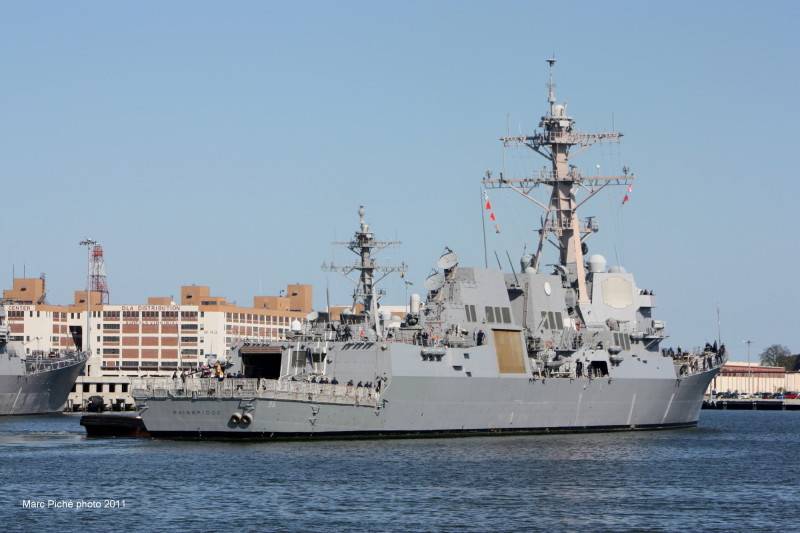
In general, the Americans have the necessary equipment, knowledge and experience in order to ensure not just the clearance of the harbors, but also the fastest demining, when, for example, mine barriers impede the withdrawal of ships from impact, and the bill goes to the clock. For such actions on a small scale, they already have everything.
On a large scale, when the enemy put up hundreds of mines during, for example, a raid of a group of submarines or an air strike, and in several bases at the same time, Americans will not be able to act quickly. However, they differ from all others in that they do not need to invent or create anything from scratch in order to gain such an opportunity - they simply need to increase their strength, which is not difficult in general and can be done in advance.
We list the current American "components of success" in a mine war.
1. Experience and training.
2. The availability of means of high-speed demining, in fact, "breakdown" of minefields - trawls towed by helicopters. These trawls make it possible to eliminate mine defenders and reduce the entire task of demining to a calm search of mines by uninhabited underwater vehicles - the NLA, followed by their destruction.
3. The presence of mine action units that have various LAs available to search for and destroy mines, which can be based with their boats on any ship and in any port, be attached to the landing forces, etc. They can be thrown in the air, as they use small boats instead of minesweepers.
4. The presence of a quick mine detection system - hydroacoustic stations on helicopters and boats, laser systems on helicopters.
5. Accommodation directly on warships of permanent mine action units, equipment and equipment to combat mines.
6. Presence of eleven fully efficient minesweepers. This number looks ridiculous for a country like the United States, if you don’t know that this is only the tip of the iceberg.
And, of course, in the US, work continues on new LAs, unmanned boats, destroyers, new methods of communication with underwater vehicles, their integration into tactical control networks are being developed.
Other works are also going on - for example, studying the possibility of using supercavitating artillery shells against underwater objects. Such ammunition allows their cannons to fire on torpedoes, and yes, on mines. And together with helicopter-based systems for detecting these mines, both laser and hydroacoustic, such a solution in the future can make it possible to simply shoot the minefield without further ado.
Nowhere to go work on the mine "module" for the ships LCS. Although so far the Americans have nothing to boast of, but so far.
Still in service, traditional means of mine clearance, the same demolition charges and cords.
In general, it is necessary to recognize that although the development of the US mine action forces is currently giving way to some unsystematic nature, but these forces in general exist, they can perform tasks for their intended purpose, they are numerous, they are well prepared, and, most importantly, no matter how chaotic their development was not, and it goes.
And this is today the only such example in the world.
Separately, it is worth mentioning the fact of resistance of American ships to explosions. As you know, every new US Navy ship is tested for strength against explosions - in other words, a powerful explosive charge is blown up next to the ship. The Internet is full of photos from such tests.
This is a consequence of the fact that the command of the US Navy attaches great importance to the survivability of warships.
In 1988, a frigate “Samuel B. Roberts” of the Oliver Perry class exploded in Iranian mine in the Persian Gulf. The explosion of a mine broke through the hull (the maximum size of the 4,6 meter hole), tore off the turbine mounts, de-energized the ship. The keel was broken. The engine room was flooded. However, after five minutes the crew, during the struggle for survivability, managed to restore the ship’s power supply, launch the radar station and weapon and return the ship limited combat capability. It was stopped flooding the interior. After that, the frigate under its own power on retractable spin-and-seek columns left the minefield area at the speed of 5 nodes.
In 1991, the Ticondeur-class cruiser, Princeton, hit two Manta landmines in Iraq. The ship lost its course, and received extensive damage, but retained buoyancy and was later repaired. At the same time on the mine exploded helicopter "Tripoli". The ship retained the course and combat capability, but lost the ability to use aircraft due to the leakage of jet fuel. These facts indicate that the mine resistance of the American ships is quite high.
And all this is also a plus in a mine war.
But, as it was said, the lessons of the Second World War and all that follows from them are not fully taken into account. And the US has serious vulnerabilities in the minefield. So, mine action veterans point out that there is no single approach to mine action tactics or to their doctrines, there is no single center responsible for the mine warfare, naval officers aiming at mine action, career problems, and would have more anti-mine forces.
Despite the fact that the United States has a better situation with mine support than the vast majority of other countries, this criticism is partly fair, and this gives certain chances to the opponents of the United States, both state and irregular.
To be continued ...
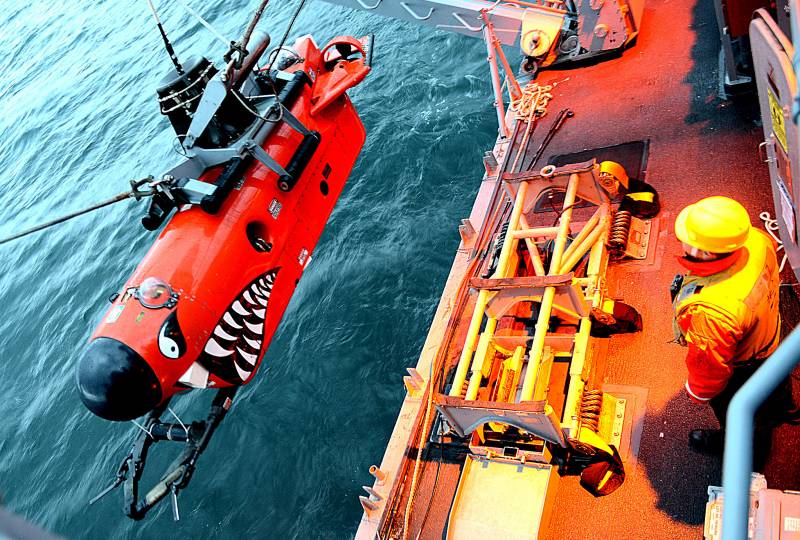
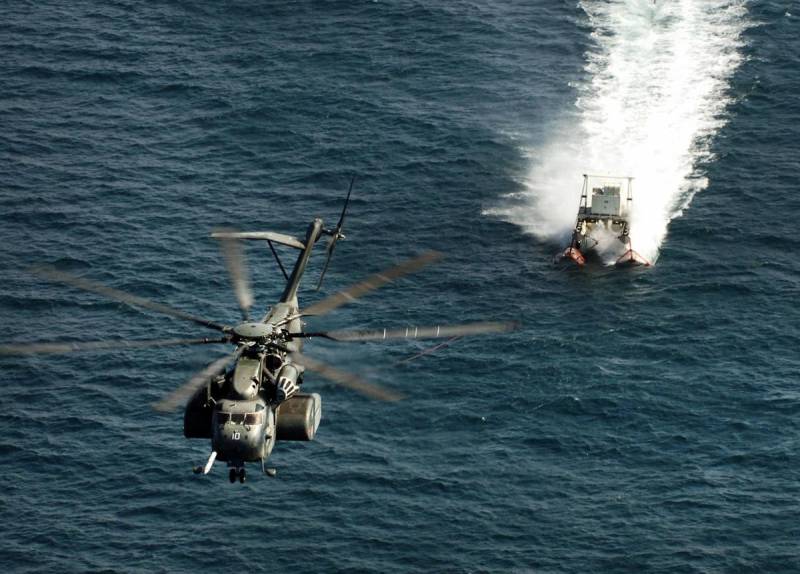
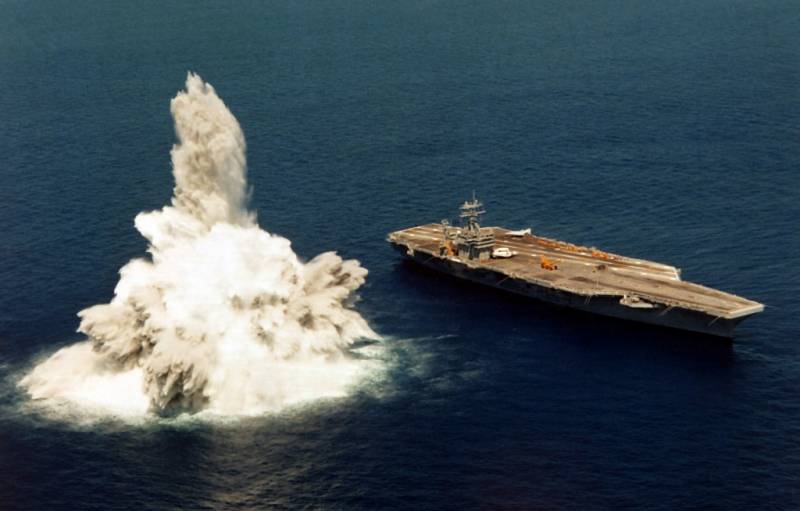
Information